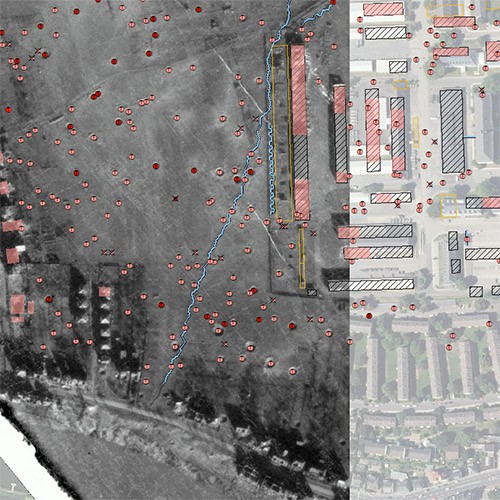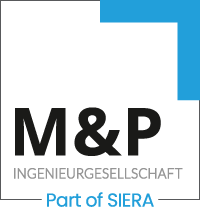Explosive ordnance clearance


Aerial photo evaluation is a central aspect of the historical-genetic reconstruction of explosive ordnance contamination. Without an aerial photo evaluation, the explosive ordnance contamination of a specific area cannot be assessed or can only be assessed in exceptional cases.
Although aerial photographs objectively represent an area or terrain at a certain point in time, the objects visible in the aerial photographs must be interpreted by the evaluator. In order to minimise misinterpretations and misinterpretations, special requirements must be placed on the evaluator, especially with regard to experience.
The specialists of Mull und Partner Ingenieurgesellschaft have many years of experience in the thematic interpretation of historical aerial photographs with regard to explosive ordnance-relevant objects and structures such as bomb craters and dud points, building damage, anti-aircraft and other emplacements, firing ranges, blast and fire sites or battlefields.
- Thematic interpretation of historical aerial photographs
- GIS-supported digitisation of the relevant image inventory
- Processing, analysis and presentation of the generated geodata
- Photogrammetric processing (orthorectification and georeferencing) of the historical image material
- Creation of historical orthophotos and orthophotomosaics
- Derivation of historical terrain models
Your contact
Departmental Coordinator
CONSTRUCTION MANAGEMENT
Norbert Tümmers 





- Basic research and archive research
- Historical explorations
- Europe-wide air strike database
- Data preparation with GIS
- Evaluation and risk assessment
- Designation of areas suspected of containing explosive ordnance
Your contact
Departmental Coordinator
CONSTRUCTION MANAGEMENT Norbert Tümmers





- Preparation of basic working materials
- Risk assessment
- Preparation of work and safety plans
- Development of clearance concepts and coordination with the relevant authorities
- Cost estimate
Your contact
Departmental Coordinator
CONSTRUCTION MANAGEMENT
Norbert Tümmers 





To support our clients in minimising explosive ordnance-related risks to the construction process.
- Information presentations on the topic of explosive ordnance risk
- Implementation planning
- Support work for other trades involved
- Weaving the explosive ordnance detection and clearance measures into the construction schedule
- Preparation of the contract documents (bill of quantities, specifications)
- Accompaniment and advice during the awarding process


- Advice during the ongoing execution
- Local construction supervision
- Site management
- Review and evaluation of exploratory data
- Project management and controlling
- Documentation
